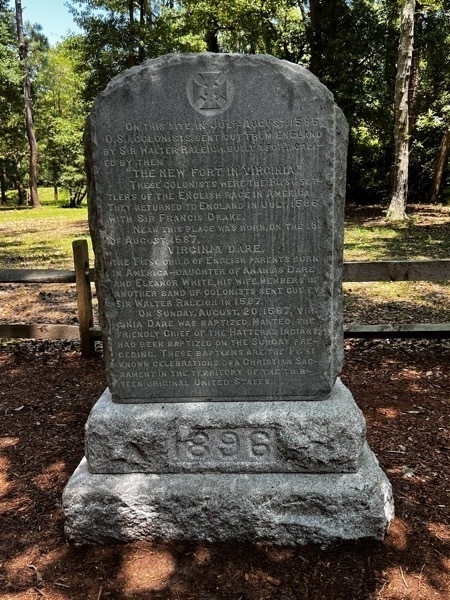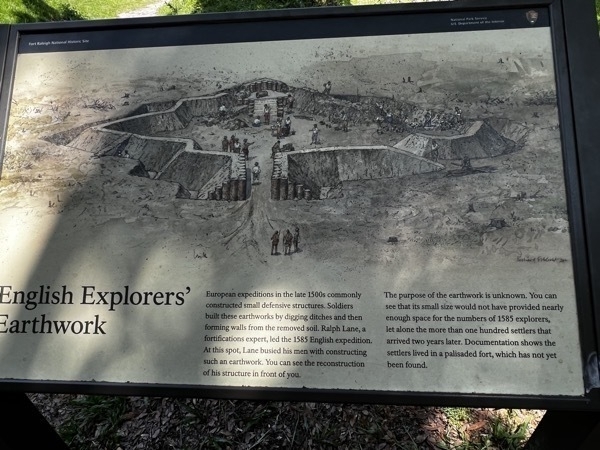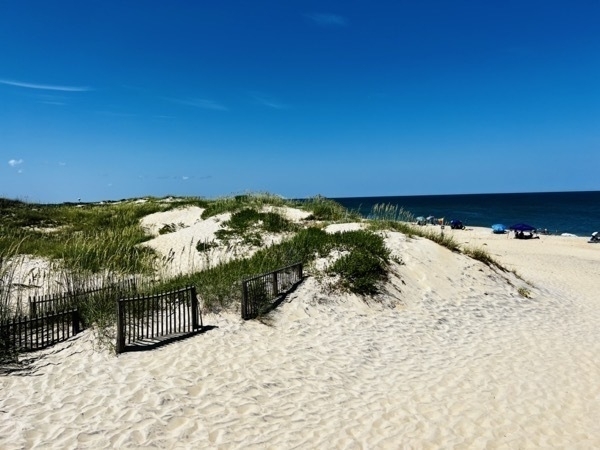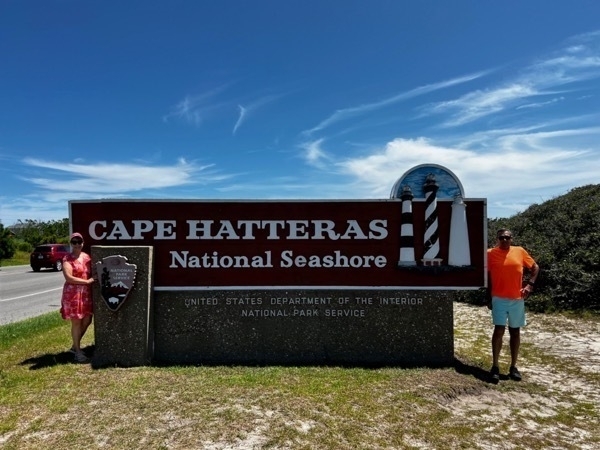Lost Colony of Roanoke and Cape Hatteras National Seashore
We started today visiting the famous DUCK DONUTS which is along the Outer Banks. All the donuts are cake donuts, but there is a wide array of flavors for toppings. I tried vanilla and Tom had chocolate. How adventuresome is that???

Lost Colony of Roanoke
The Lost Colony was an English settlement established on Roanoke Island in present-day North Carolina in the late 16th century. It holds the distinction of being one of the oldest English colonies in the New World.
In 1585, Sir Walter Raleigh sponsored the first expedition to Roanoke Island, led by Ralph Lane. However, the mission faced numerous challenges, including scarce resources and conflicts with local Native American tribes. Ultimately, they decided to return to England after a year.
In 1587, a second expedition was organized, this time led by John White. Around 120 settlers, including women and children, arrived at Roanoke Island with the intention to establish a permanent colony. This group was the first English attempt at colonizing families in the New World.
Soon after their arrival, tensions with the Native American tribes escalated. John White, sensing the potential threat, decided to return to England to gather more supplies for the colony. Due to the outbreak of the Anglo-Spanish War, it took him three years to secure a ship and make his way back to Roanoke.
When John White finally returned in August 1590, he found the colony abandoned with no traces of the settlers, except for the word "Croatoan" carved on a post and "Cro" carved on a nearby tree. This led to the mystery that still surrounds the fate of the Roanoke Colony and its settlers.
To this day, the fate of the Lost Colony remains unknown. Various theories suggest that the settlers may have been assimilated into local Native American tribes, faced hostile encounters, or perished due to disease or famine. Despite numerous efforts and expeditions, the mystery of the Roanoke Lost Colony continues to captivate historians and researchers.
Virginia Dare was the first child born in the New World, but like the other settlers, no trace of her exists.


European expeditions in the late 1500s commonly constructed small defensive structures. Soldiers built these earthworks by digging ditches and then forming walls from the removed soil. Ralph Lane, a fortifications expert, led the 1585 English expedition.
The purpose of this earthwork is unknown. its small size would not have provided nearly enough space for the numbers of 1585 explorers, let alone the more than one hundred settlers that arrived two years later. Documentation shows the settlers lived in a palisaded fort, which has not yet been found.

Cape Hatteras National Seashore


We briefly walked along the sand (which was VERY hot) and got into the water which was COLD. Now I sound like Goldilocks ...
Bodie Lighthouse

This is the third lighthouse to stand near this property between Roanoke Island and Nags Head. It was built in 1872.
